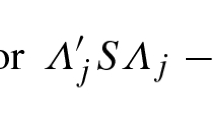Abstract
Problems in applying the analysis of variance are discussed. Emphasis is placed on using the technique to understand the data. The scale of the dependent variable is important for the analysis. Crossed and nested categories must be recognized. The error terms in the analysis depend on whether the classes of each independent variable are (1) all out of a few or (2) a few out of many. To simplify the analysis, mean squares should be aggregated with their error term when they are less than twice its size. An illustrative example is discussed in detail.
Similar content being viewed by others
References
Anderson, R. C. and Bancroft, T. A.Statistical theory in research. New York: McGraw-Hill, 1952.
Bozivich, H., Bancroft, T. A., and Hartley, H. O. Power of analysis of variance test procedures for certain incompletely specified models, I.Ann. math. Statist., 1956,27, 1017–1043.
Bennett, C. A. and Franklin, N. L.Statistical analysis in chemistry and the chemical industry. New York: Wiley, 1954.
Bross, I. Fiducial intervals for variance components.Biometrics, 1950,6, 136–144.
Cochran, W. G. Testing a linear relation among variances.Biometrics, 1951,7, 17–32.
Cornfield, J. and Tukey, J. W. Average values of mean squares in factorials.Ann. math. Statist., 1956,27, 907–949.
Crump, S. L. The present status of variance component analysis.Biometrics, 1951,7, 1–16.
Eisenhart, C. The assumptions underlying the analysis of variance.Biometrics, 1947,3, 1–21.
Grant, D. A. Analysis-of-variance tests in the analysis and comparison of curves.Psychol. Bull., 1956,53, 141–154.
Grindley, G. C. The variation of sensory thresholds with the rate of application of the stimulus. I. The differential threshold for pressure.Brit. J. Psychol., 1936–37,27, 297–302.
Johnson, P. O.Statistical methods in research. New York: Prentice Hall, 1949.
Johnson, P. O. and Tsao, F. Factorial design in the determination of differential limen values.Psychometrika, 1944,9, 107–144.
Kempthorne, O.The design and analysis of experiments. New York: Wiley, 1952.
Kogan, L. S. Variance designs in psychological research.Psychol. Bull., 1953,50, 1–40.
Mood, A. M.Introduction to the theory of statistics. New York: McGraw-Hill, 1950.
Pal, G. Limens for continuous change.Indian J. Psychol., 1944,19, 155–160.
Paull, A. E. On a preliminary test for pooling mean squares in the analysis of variance.Ann. math. Statist., 1950,21, 539–556.
Satterthwaite, F. E. An approximate distribution of estimates of variance components.Biometrics, 1946,2, 110–114.
Scheffé, H. Alternative models for the analysis of variance.Ann. math. Statist., 1956,27, 251–271.
Smith, H. F. The problem of comparing the results of two experiments with unusual errors.Jour. G.S.I.R. (Australia), 1936,9, 211–212.
Tukey, J. W. Components in regression.Biometrics, 1951,7, 33–69.
Tukey, J. W. Interaction in a row-by-column design. Memo. Rep. No. 18, Statist. Res. Group, Princeton Univ., 1949.
Tukey, J. W. Variances of variance components: I. Balanced designs.Ann. math. Statist., 1956,27, 722–736.
Welch, B. L. The specification of rules for rejecting too variable a product, with particular reference to an electric lamp problem.J. roy. statist. Soc. Suppl., 1936,3, 29–48.
Wilk, M. B. The logical derivation of linear models for experimental situations and their use in selecting the appropriate error term in the analysis of variance, I, AV-3 (1953); II, On the analysis of a general randomized block type design, AV-4 (1954); III, (with O. Kempthorne) The expectations of mean squares for a general three-way classification, AV-7 (1954); IV, (with O. Kempthorne) Fixed, mixed, and random models, AV-8 (1954); V, Expectations of mean squares for a general three-way classification (Part 2), AV-9 (1954); VI, Interactions with experimental units, AV-10 (1954). Analysis of variance project reports, Statistical Laboratory, Iowa State College.
Wilk, M. B. and Kempthorne, O. Fixed, mixed, and random models.J. Amer. statist. Assoc., 1955,50, 1144–1167.
Author information
Authors and Affiliations
Additional information
Prepared in connection with research sponsored in part by the Office of Naval Research, in part by the Educational Testing Service, and in part by Lincoln Laboratory, a center for research operated by Massachusetts Institute of Technology with the joint support of the U. S. Army, Navy, and Air Force.
Rights and permissions
About this article
Cite this article
Green, B.F., Tukey, J.W. Complex analyses of variance: General problems. Psychometrika 25, 127–152 (1960). https://doi.org/10.1007/BF02288577
Received:
Revised:
Issue Date:
DOI: https://doi.org/10.1007/BF02288577




